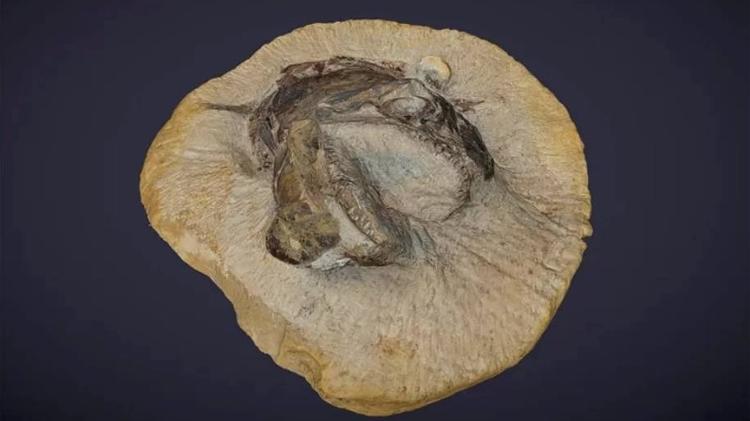A wild-looking fish fossil has been unearthed from a remarkable new Jurassic excavation site just outside Stroud in Gloucestershire, England.
The creature, a predator called pachycormusIt is beautifully preserved in three dimensions, similar to tuna.
It looks like it’s about to launch an attack with its big teeth and eyes.
The specimen was described by fossil hunters Neville and Sally Hollingworth.
“It was a real surprise because when you find fossils, they often flatten out under the influence of time,” Neville told BBC News.
“But finding this was incredible because we noticed that the skull was not crushed.”
“The fish’s mouth is open and it looks like it’s coming from the rock towards you.”
The couple found the fish head in a pasture behind a barn in the village of Kings Stanley.
It was embedded within one of the many limestone nodules that formed an exposed layer of clay.
Land owner Adam Knight did not know that his cattle were grazing on a rich layer of fossils dating back 183 million years. At that time, the site was under warm tropical waters.
Knight gave permission to Neville and Sally, along with a team led by the University of Manchester in England, to investigate the site further.
A backhoe was brought in to remove the hundreds of nodules and these were carefully opened to see what they contained.
More fish, squid and even bones of two ichthyosaurs, marine reptiles similar to modern-day dolphins but larger, were discovered at the end of the excavation.
“We have the whole food chain here,” said paleontologist Dean Lomax of the University of Manchester.
“This pachycormus probably would have eaten smaller fish and squid.”
“And ichthyosaurs, pachycormus“
Interestingly, for a marine life scenario, fossilized wood chips and insects were also found in the clay layer, suggesting that the land was not far from this body of water.
The findings will likely keep researchers busy for years to come.
And there’s a lot of interest because the specimens belong to a strange period in the early Jurassic, Toarcien.
This is a period known for the exceptional preservation of specimens, including soft tissue, and the team even found a fish where stomach contents could be seen.
“The last comparable discovery was made at Strawberry Bank Lagerstätte in Somerset in the 1800s,” Sally speculates.
The Hollingworths are renowned for their extraordinary ability to identify fossil sites.
They recently discovered mammoth remains at the Cotswold Waterpark, the investigation turned into a BBC documentary.
They were also known for discovering thousands of fossilized echinoderms? Starfish, sea urchins and brittle stars in a quarry to the north of the site.
“These sites reveal that there is still a lot of important fossil discoveries to be made in the UK,” Lomax says.
The aim is to hold a public exhibition of the fossils in the UK from October.
See 3D model pachycormus at this link.
– This text was published at https://www.bbc.com/portuguese/geral-62350978.
source: Noticias
[author_name]


